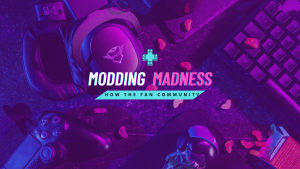Introduction Game Development
In the quick-paced world of online Game Development improvement, where creativity meets era, the journey from concept to a polished, worm-unfastened sport is often a winding avenue. While players eagerly count on the discharge of a new sport, the reality is that the initial model is only sometimes flawless. This is where the unsung heroes of recreation development come into play: patches, hotfixes, and other updates. In this newsletter, we’ll discover the importance of these behind-the-scenes efforts and why they depend so much on the dynamic landscape of contemporary gaming.
The Imperfect Launch: A Common Tale
It’s no mystery that a flurry of trojan horse reviews, surprising glitches, and unanticipated problems often accompanies recreation launches. Despite rigorous trying out and first-class warranty methods, modern games’ sheer complexity, complex images, problematic storylines, and numerous gameplay mechanics make it nearly impossible to seize every hiccup before the game hits the market. In the not-so-remote past, a recreation’s release took into consideration its very last form.
Once it shipped, that became it—gamers had to accept any flaws or system defects as part of the gaming experience. However, the evolving nature of the gaming enterprise has converted this attitude, introducing the idea of putting up-release guides and non-stop development through patches and hotfixes.
Also Read: Gamers vs. Streamers: Is the Line Between Fan and Content Creator Blurring? 2024
Patching Up the Cracks: The Role of Updates

Patches are updates released via recreation developers to address troubles after a recreation’s initial release. These updates can range from solving minor bugs to implementing foremost overhauls, introducing new functions, or even optimizing overall performance. The key gain of patches is they permit developers to refine and decorate the gaming experience primarily based on real-world player remarks. One of the number one reasons patches depend is their capacity to preserve a sport applicable in the long run. Games are not static entities but dynamic ecosystems that may evolve through the years.
Hotfixes: Rapid Responses to Critical Issues
While patches provide comprehensive updates, hotfixes are a subset of patches designed to deal with crucial problems immediately. These problems may vary from Game Development, game-breaking bugs to safety vulnerabilities that need immediate attention. Hotfixes are the firefighting force of the gaming industry, unexpectedly deployed to patch up the most urgent troubles without requiring players to download a large replacement.
Hotfixes’ significance lies in their ability to maintain the integrity of the gaming enjoyed in actual time. Imagine a state of affairs wherein a newly determined malicious program prevents players from progressing via an essential part of the sport. With a hotfix, players would be satisfied and energized.
The Connection Between Players and Developers
The relationship between gamers and developers was exceptionally distant in the early days of gaming. Communication becomes confined once a recreation is released, and player remarks frequently fall on deaf ears. However, the advent of the internet and online gaming and Game Development has bridged this gap, fostering a direct and non-stop conversation among builders and their participant groups. Patches and hotfixes serve as tangible manifestations of this connection. They constitute a collaborative attempt between builders and gamers, wherein the gaming network will actively refine their favored titles.
Evolutionary Updates: Expanding the Gaming Experience
Patches and hotfixes are more complex repair issues; additionally, they have the strength to transform a sport over the years. Developers can use updates to introduce new content material, functions, and gameplay mechanics, successfully breathing new life into a title. This evolution is particularly evident in games that include the live service model, where ongoing support and updates are essential to the sport’s success. For example, a multiplayer game might acquire ordinary updates introducing new maps, characters, and sports modes, preserving the revel in clean and exciting for players.
Also Read: Modding Madness: How the Fan Community Shapes the Games
The Balancing Act: Gameplay and Technical Optimization
Beyond malicious program fixes and content material updates, patches frequently include optimizations to improve gaming revel. This can involve anything from enhancing photos and overall performance to high-quality-tuning gameplay mechanics for better balance. These optimizations are vital for ensuring that a sport runs smoothly across many hardware configurations and gives fun enjoyment to all gamers. In the competitive panorama of gaming, where player expectations are high, developers have to strike a sensitive balance between pushing the bounds of what is feasible and handing over a cultured, accessible enjoyment.
The Unseen Effort: Development Challenges and Resource Allocation
While patches and updates are celebrated for their tremendous impact on gaming enjoyment, it is crucial to apprehend the demanding situations faced with the aid of builders in delivering these enhancements. Identifying, solving, and trying out problems is time-consuming and practical resource-in-depth. Game Development must cautiously prioritize which troubles to address, balancing the need for rapid responses with checking out every update to avoid introducing new problems thoroughly. Resource allocation is another important thing.
Conclusion
In the grand tapestry of online game improvement, patches, hotfixes, and updates are the threads that weave collectively player reports and developer intentions. The dynamic dating among Game Development and gamers, facilitated by those non-stop improvements, has converted gaming into a collaborative adventure.
The as-soon-as-static notion of a sport’s release has advanced into an ongoing communication, wherein developers respond to participant feedback, cope with issues promptly, and form the gaming landscape in actual time. As we have a good time with the unsung heroes of recreation development—those lines of code that quietly restore bugs and enhance gameplay—it’s essential to comprehend the symbiotic dating among creators and purchasers.
FAQs
- What is the cause of recreation improvement patches and updates?
Game improvement and Game Development patches and updates serve the purpose of addressing problems and enhancing the gaming experience post-release. These updates can range from solving bugs and glitches to introducing new content material, optimizing performance, and responding to participant feedback. They play a vital role in refining and evolving a game.
- How do players contribute to the patching manner?
Players contribute to the patching system by engaging with developers via various channels. Game Development, Game forums, social media, and reputable remarks channels allow gamers to record bugs, advise enhancements, and proportion their stories. Game Development use these comments to become aware of troubles and prioritize updates, developing a collaborative relationship among gamers and builders.
- What is the difference between patches and hotfixes in game improvement?
Patches and hotfixes are both forms of updates in recreation development. However, they serve unique functions. Patches are complete updates that deal with various troubles, introduce new capabilities, and optimize the general gaming revel. Hotfixes, then again, are rapid updates designed to address essential concerns directly, supplying immediate solutions to pressing issues without requiring players to download a big update.
- How do recreation improvement patches impact the sturdiness of a recreation?
Game improvement patches substantially affect the toughness of a game with the aid by permitting developers to maintain the game applicable and tasty over a prolonged length. Game Development These updates no longer best fix technical troubles; however, Game Development they enable developers to respond to changing player alternatives, introduce new content, and adapt to the evolving gaming panorama. Patches a contribution to a recreation’s durability by creating an ongoing and dynamic participant enjoyment.
- What challenges do builders face in freeing patches and updates?
Developers face several challenges in freeing patches and updates, including identifying and prioritizing troubles, resource allocation, and the need for thorough checking out to avoid introducing new problems. Game Development Striking a balance between addressing current concerns and making plans for the long term is a steady mission. Additionally, developers must navigate the evolving expectancies of the participant network and ensure that updates enhance, as opposed to disrupt, the overall gaming experience.







